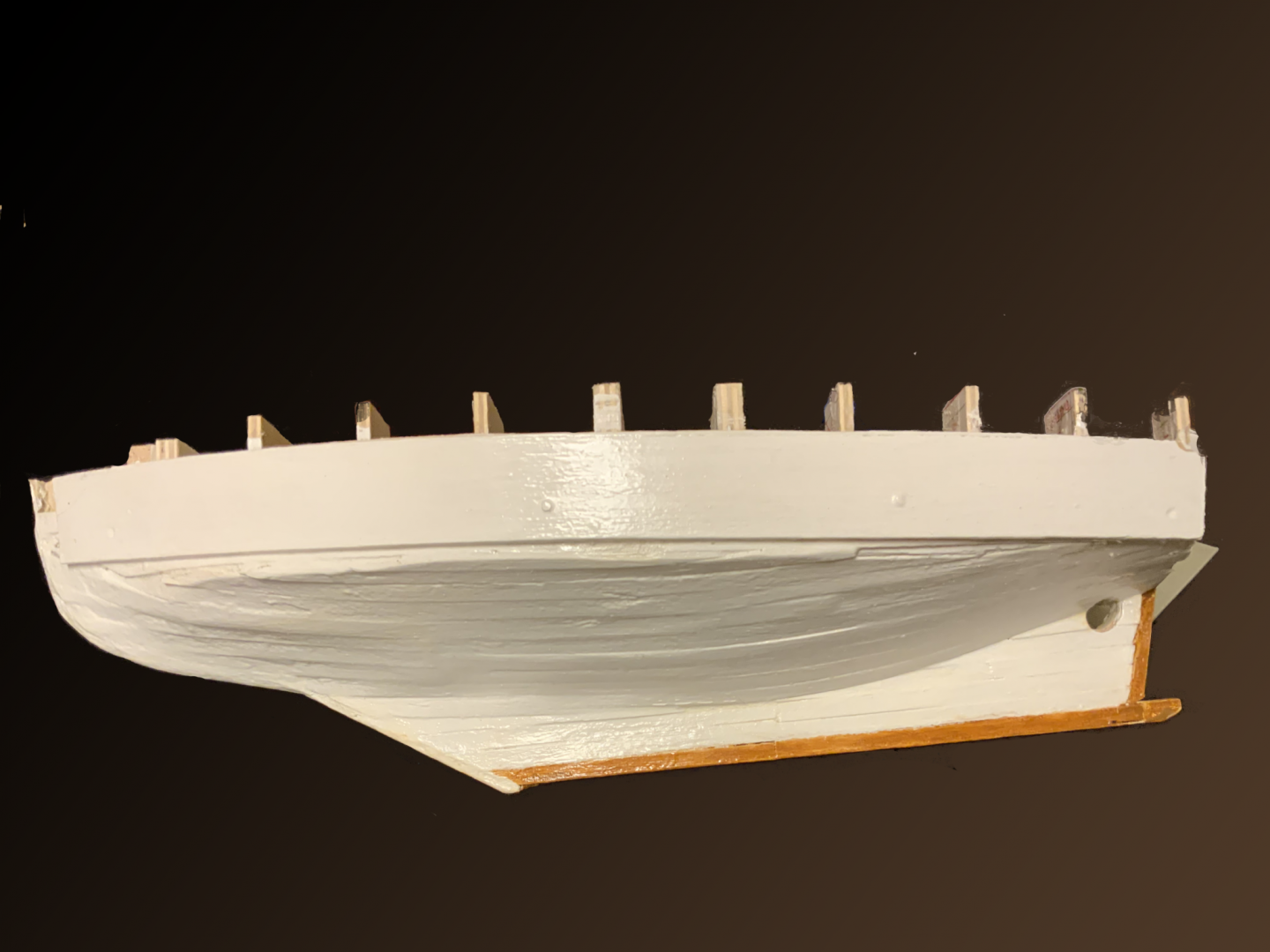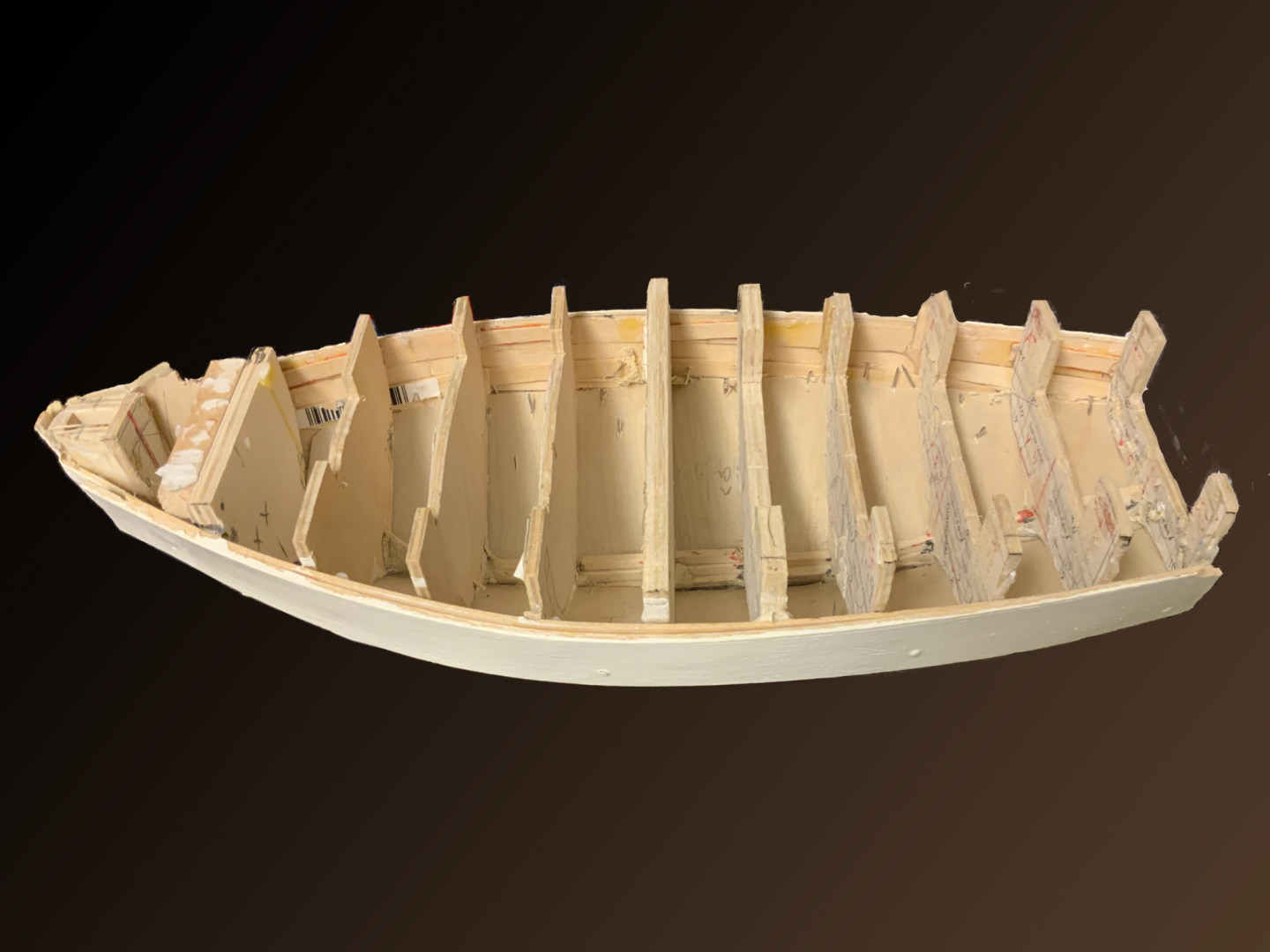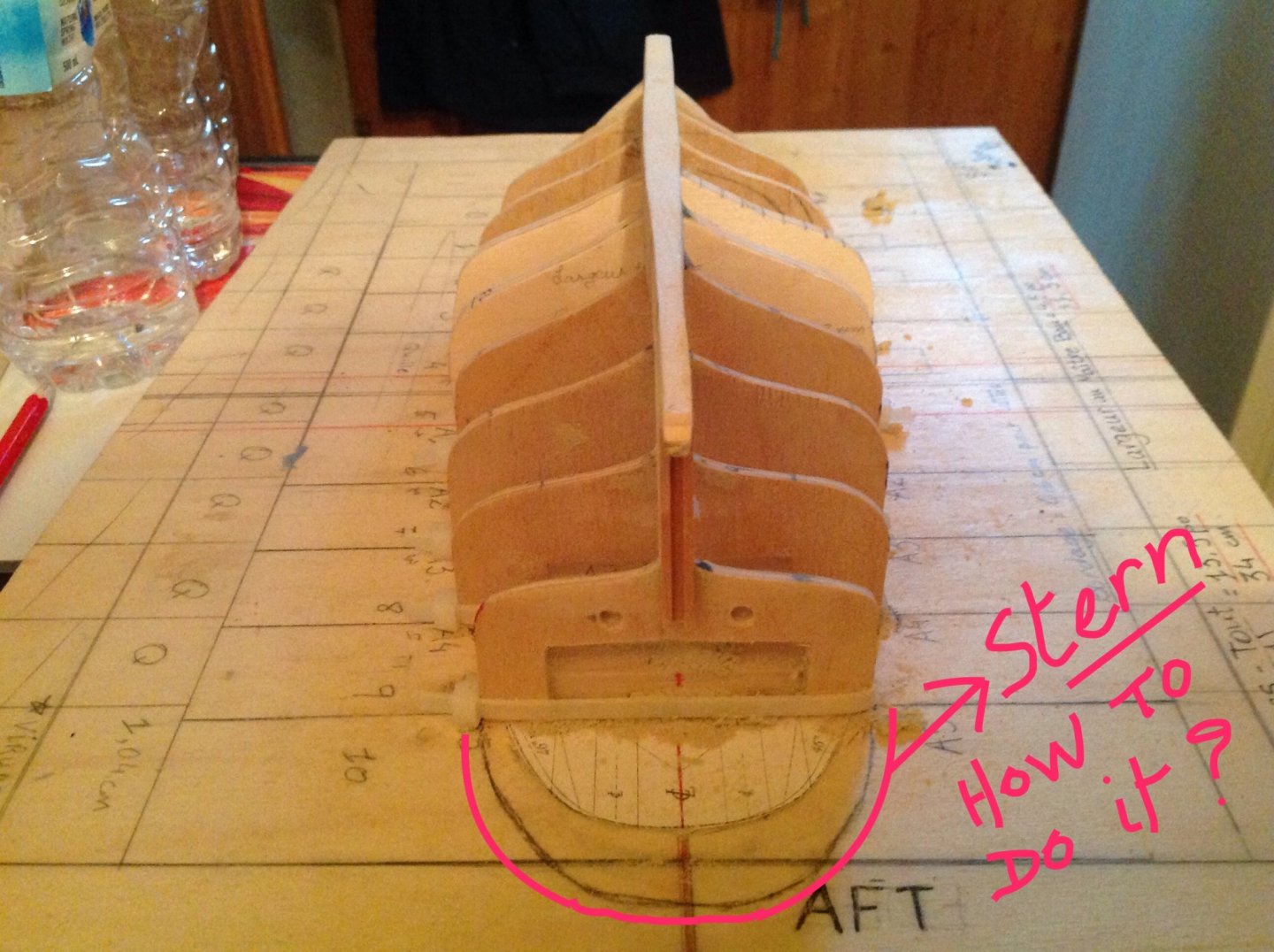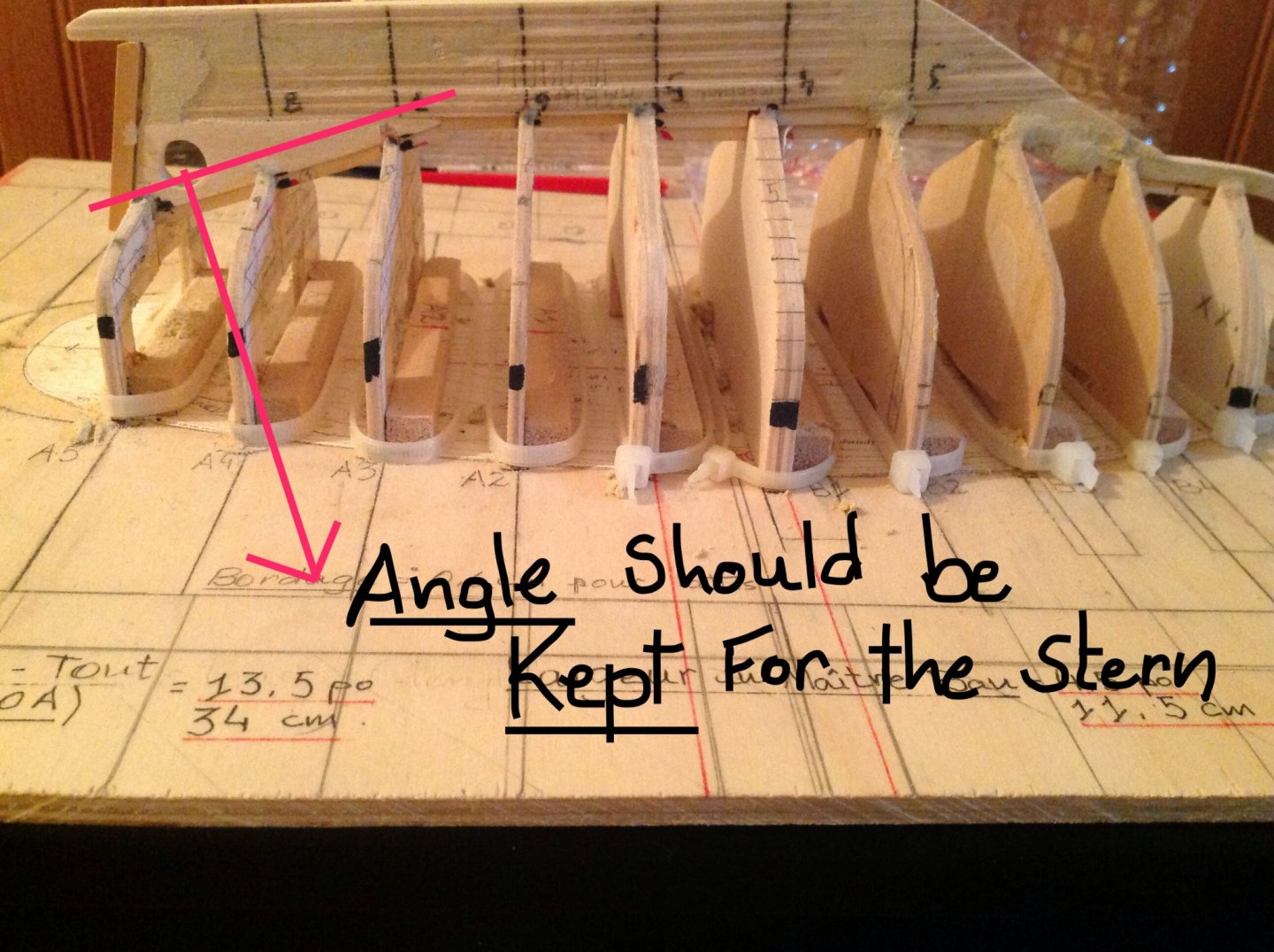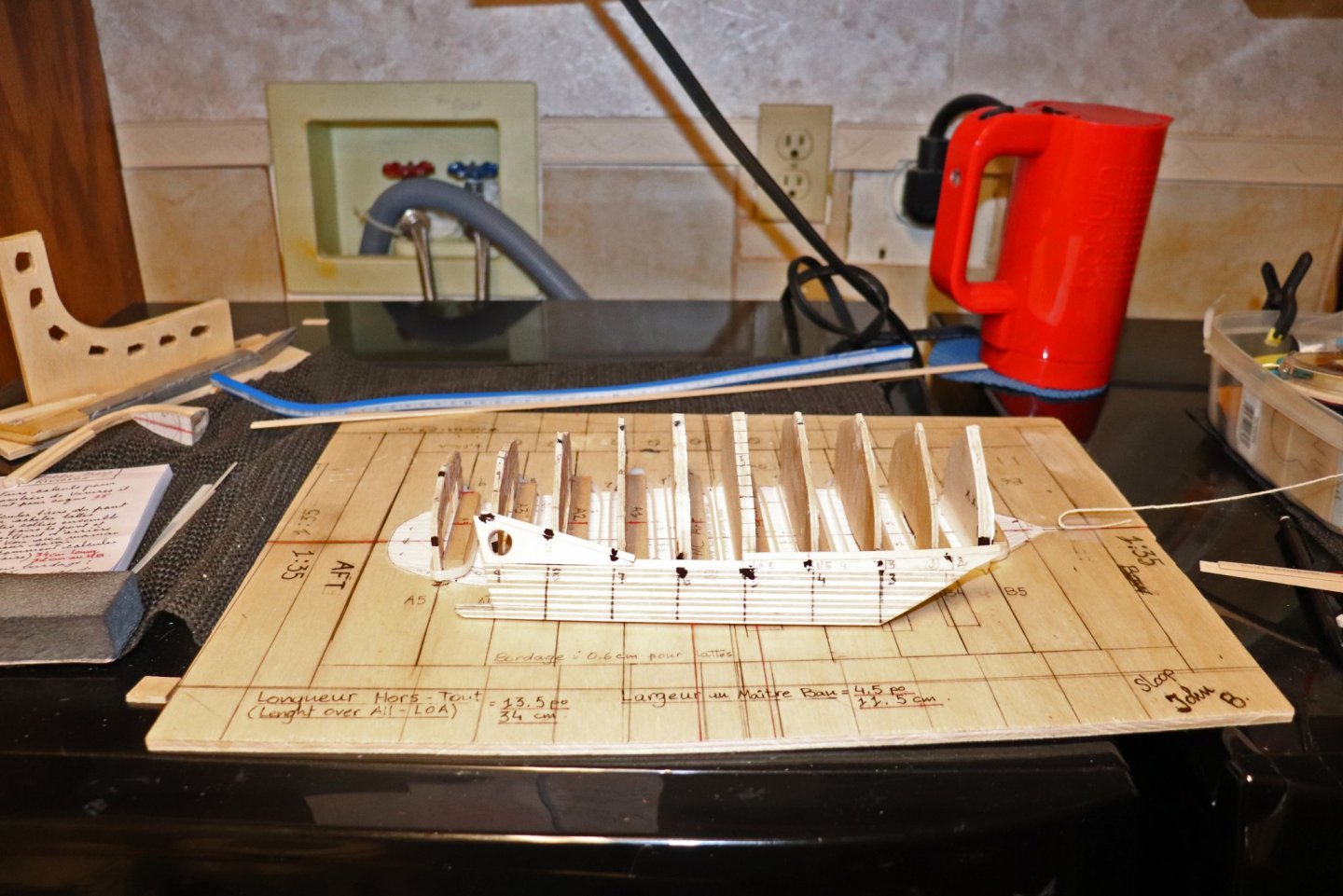-
Posts
7 -
Joined
-
Last visited
About lili.marlene3945
- Birthday 01/24/1975
Contact Methods
-
Website URL
https://titanichistoire.tumblr.com
Profile Information
-
Gender
Female
-
Location
Repentigny, Canada
-
Interests
Ship modeling, History, Titanic History, Carving, Playing Guitar, Writing articles and novels, reading, U.S Series, Video games (action : Call of Duty, GTA, etc.), Photography, Oil painting, and many more !
Recent Profile Visitors
The recent visitors block is disabled and is not being shown to other users.
-
 Scottish Guy reacted to a post in a topic:
For Beginners -- A Cautionary Tale
Scottish Guy reacted to a post in a topic:
For Beginners -- A Cautionary Tale
-
 JerryC reacted to a post in a topic:
For Beginners -- A Cautionary Tale
JerryC reacted to a post in a topic:
For Beginners -- A Cautionary Tale
-
 GrandpaPhil reacted to a post in a topic:
KATHLEEN by lili.marlene3945 (Kareen Healey) - Scale 1:35 - Gaff-Headed Sloop - First ship built POB
GrandpaPhil reacted to a post in a topic:
KATHLEEN by lili.marlene3945 (Kareen Healey) - Scale 1:35 - Gaff-Headed Sloop - First ship built POB
-
 mtaylor reacted to a post in a topic:
KATHLEEN by lili.marlene3945 (Kareen Healey) - Scale 1:35 - Gaff-Headed Sloop - First ship built POB
mtaylor reacted to a post in a topic:
KATHLEEN by lili.marlene3945 (Kareen Healey) - Scale 1:35 - Gaff-Headed Sloop - First ship built POB
-
 ccoyle reacted to a post in a topic:
KATHLEEN by lili.marlene3945 (Kareen Healey) - Scale 1:35 - Gaff-Headed Sloop - First ship built POB
ccoyle reacted to a post in a topic:
KATHLEEN by lili.marlene3945 (Kareen Healey) - Scale 1:35 - Gaff-Headed Sloop - First ship built POB
-
 ccoyle reacted to a post in a topic:
KATHLEEN by lili.marlene3945 (Kareen Healey) - Scale 1:35 - Gaff-Headed Sloop - First ship built POB
ccoyle reacted to a post in a topic:
KATHLEEN by lili.marlene3945 (Kareen Healey) - Scale 1:35 - Gaff-Headed Sloop - First ship built POB
-
Hello, Here is an update, after so many months. When I started it, I intended to build the "Kathleen" .. or "a boat" if it doesn't happened to be this. And guess what ? It is 50% the Kathleen and 50% "a boat". The planking was troublesome, and for I had hard time with the bow, I had to fix it with the cutting of some of the fore planks. Another layer of planking was needed because it was not possible to put only a piece of planks whereabouts where I cut those for it was not long enough to allow the glue to do its job in a efficient way. Here is some photos of my work : Next time I will come here, the layout will be done, although I don't know how to proceed for now : cutting the frames ? Doing the deck over it ?... A lot of questions and no answers ! If someone has an idea, please don't hesitate to tell me.
-
 Ondras71 reacted to a post in a topic:
For Beginners -- A Cautionary Tale
Ondras71 reacted to a post in a topic:
For Beginners -- A Cautionary Tale
-
 Keith Black reacted to a post in a topic:
For Beginners -- A Cautionary Tale
Keith Black reacted to a post in a topic:
For Beginners -- A Cautionary Tale
-
 ss hooker reacted to a post in a topic:
For Beginners -- A Cautionary Tale
ss hooker reacted to a post in a topic:
For Beginners -- A Cautionary Tale
-
 tkay11 reacted to a post in a topic:
Medway Longboat 1742 by Chuck - FINISHED - 1/2" scale
tkay11 reacted to a post in a topic:
Medway Longboat 1742 by Chuck - FINISHED - 1/2" scale
-
It is a very good job ! I like it so much and it gave me the taste to get back to the "Longboat Armed for War 1834" from the monography by Gérard Delacroix (from scratch) that I have began last year but I had failed to do the mould and I began a sailing boat, promising myself to do that longboat some day.
- 421 replies
-
- medway longboat
- Syren Ship Model Company
-
(and 1 more)
Tagged with:
-
Hello everyone, I will describe the building of my little boat, but before, here is a short (euh... ok, everybody has not the same concept of what is "short" 😜 -- mine is like a rubber band ! 😂) story of the KATHLEEN. I will come back to describe the building and put some photos very soon. I have begun it in July, and it was following my fifth failure upon other boats’ projects that were too ambitious for the “rookie” I was in ship building. I put aside my pride 😂 and decided to get involved with an easier project : the shoal-draft centerboard Sloop named KATHLEEN which has been built on North-Beach in 1904-1905 by the immigrant boat builder S.O Pasquinucci for Frank Raymond, a grocer that named her for his daughter, born in 1903. The Sloop has been used both for cruising and racing, until the First World War, in 1914. Rendered obsolete by changes in racing boat rules and designs, the boat has been altered into a yawl with ballasted keel in 1930 and was then used for recreation for seven decades. She had many owners after Raymond who killed himself on February 27, 1913 with a shotgun after some business troubles. He was then 36. The Sloop is an example of the national yacht type that dominated most American yachting centers from the 1850 to about 1885. These Sloops developed from beamy craft with lofty, single-mast rigs that the Dutch used on the shallow waters and transplanted to New-Amsterdam in the XVIIth Century. New-Amsterdam was to become New-York more than a Century after. The first centerboard (generally 15 to 24 feet in length at the waterline) arrived in San Francisco about to 1850. They were intended as workboats for fishing and freighting, but they doubled as some of the bay’s earliest recreational racing boats. An interest in amateur racing spread among people of moderate means, such as clerks and attorneys who owned and maintained their boats with volunteer crews. They then formed yacht clubs whose name incorporated the term “Corinthian” for their amateur status and reliance on unpaid crews. The KATHLEEN broke her mast on her very first time out in April 1905 and had to have a new mast stepped. It was replaced in March 1906 by a shorter one, and the gaff was lengthened by 8 feet to carry a high-peaked mainsail. A new centerboard was fitted and the cabin overhauled at the same time. In February 1908 owner Frank Raymond had the 1906 mast replaced with one six feet taller to accommodate a new set of sails for the coming season. In 1931 the owner Edward E. Shea, also member of the Corinthian Yacht Club as Raymond was, installed the first auxiliary engine. The power rating is unknown. To do so, the companionway was repositioned to starboard. Edward C. Thoits, a well-known civic leader purchased KATHLEEN in 1932 and changed her name to ISLANDER. He owned her until his death in 1951. In 1992, Stephen Canright, a curator at San Francisco Maritime National Historical Park (SAFR) noticed the boat in Paradise Cay Yacht Harbor and recognized it as an example of an historic yacht type that was almost extinct in San Francisco Bay. Canright created a syndicate for the boat’s preservation. Harry Smith, the owner of KATHLEEN who bought her in 1960’s, supported Canright’s view and help him out. However, the syndicate was loosely organized which weakened preservation efforts. In 1996 a substantial leak developed when a garboard seam opened up during a trip. The boat was repaired but extensive cruising in her was given up before 2005. Smith donated her to SAFR in 2011. The Historic American Engineering Record (HAER) is a long-range program that documents and interprets historically significant engineering sites and structures throughout the USA. HAER is part of Heritage Documentation Programs, a division of the National Park Service, United States Department of the Interior. The Sloop KATHLEEN Recording Project was sponsored by the San Francisco Maritime National Historical Park (SAFR). Documentation for HAER was directed by Todd Croteau, HAER staff architect, Washington DC, under a cooperative agreement with the Council of American Maritime Museums. That was the story of the KATHLEEN, and how I have found her plans on the Library of Congress’ archives https://www.loc.gov/item/ca3967/ By the way, if someone is living in San Francisco and could go at San Francisco Maritime National Historical Park to take some photos of the restored KATHLEEN, and send those to me, I would appreciated it a lot for the photo they have taken are not so detailed. The building of the KATHLEEN : I began my project with the preparation of a board to build my boat with keel upside down. Then I have cut my Half Breadth Plan out and pasted it on to the board. Upon every line that embodying a frame, I pasted battens that I have used to tie every frame upon it. The photograph I put here will show you what I mean. My board is kind of muddled (i.e : borders are not very straight ; I have written on it, etc.) but the main purpose is reached. However, it was important to trace the middle line of the boat for laying the keel in a further step. Then I have used the Body Plan of which I have made 11 photocopies and I cut every shape of the frames (there is 2 midship frames for the KATHLEEN) which I glued onto a plywood with double faced tape, and I have cut it with my scroll saw then tie it upon the battens with tie wrap : I did not want to glue it because I wanted to be able to take it off if needed. The third step was the building of the keel. It was not an easy thing, especially if it slips from your grasp and the trailing end broke at the point of you are not able to recognize the parts !😭 But once more, I did not let myself being discouraged and I have built another one – which is far better than the first one ! I have used my Half Breadth Plan and cut the shape of the keel out of that plan five times and like the frames, I glued it altogether and cut it with the scroll saw before sanding it to have the right shape. I let a hole for the stern propeller (which I will installed when hull will be finished). Unlikely the former keel, I did not planked it, preferring doing that with the hull later The fourth step was to groove the rabbet to put each fram in the keel (I mean not the one used for the garboard – I should admit that I forgot it 😳) and this too I have had to do it again for it was not aligned the right way. I patched the rabbet up using Plastic Wood that I mixed with white glue for prevent it from disintegrate the very first moment my file would have touched it. My idea was a good one : it was cement-like and new rabbets were right and aligned. I would have thought that it should have been much more difficult, but it was the most easiest thing I did with that boat ! The keel was mounted in a perfect way when I have tried it that I did not dare to touch it and I decided to glued it without take it off in case of I would not have been able to put it right another time. Therefore, I have asked my dentist to give me a syringe with its needle for being able to put glue in the little cracks between frames and keel. There too my guess had worked. (Photograph : the former keel) The next step will be the planking, but however I have a little problem for which I hope you will be able to help me out with your experience: the last frame at the aft end is not the end of the KATHLEEN for she has a round stern which has an angle if you look at the plan. I know that I must do that before planking but I have not a ghost of an idea how to do it. Of course, I thought of some solution, but none had worked (the holes into the last frame can express it) and it’s been 2 weeks now that I racked my brains.
-

Hello, glad to be here !
lili.marlene3945 replied to lili.marlene3945's topic in New member Introductions
Thank you all, your warm welcome are appreciated. Very nice your car, Duanelaker. I just love car like this ! V8 DHC Motor 5,5 L, I suppose ?? (I know, I'm off topic. Moderators, don't shoot me ! lol! ) -
Hello everyone, I'm glad to be on that forum that seems very energetic. I'm living in Canada, province of Quebec, I'm 44 (but feeling like 24 !! lol!) and I am enthusiastic of ship modeling since three years. I've been through a lot of setbacks (I've written something in the topic "For beginners - A Cautionary Tale" where I explain everything) but I am stubborn and I want my boat and will have it, no matter the cost : time, wood... Blood sweat and tears would have add Sir Winston Churchill ! lol! I have a lot of passion but History is my greatest. There is five years ago, I've read a book about Titanic and decided to translate all the Wreck Commissionner's Inquiry (the British one) which will be published freely with several ebooks with topics (for instance, one book for the officers ; one for Stewards ; one for Deckhands ; one for engineers ; etc.). In each of these volumes, readers will be able to have the history and technic informations in the first part, and the translation from English to French will be in the second part. That's makes me do a lot of researches, gave me the idea of wanting to build the Titanic. But that was a project too big for someone who knows nothing of ship modeling and have no experience. So I decided to try the Titanic's lifeboat with the bread-and-butter solid hull technic, but I've missed two of them. Then I've seen a Gabare in the Plans of Admiral Pâris and told myself that I could manage it. But I still missed another solid hull. There is 1 year and a half I've bought a monography named "Longboat armed 1834" from Gérard Delacroix and in spite of the fact that I've missed another solid hull, it helps me a lot to learn how to build a boat from scratch (how the keelson, ribs, floor fits together). Last Spring I've found something much more easier on the web site of the Library of Congress : a little Sloop named "Kathleen" build in 1905 in San Francisco which the plans have been made in 2010 in CAD. This time I build it not with a solid hull but starting with ribs, hull upside down on to a board, and it goes so well since. Sure I get sometimes discouraged, but I want my boat and I will have my boat against all odds ! I promise ! :-) Before finishing this message, as you may notice, my first language is not English, but French, so there could be some mistakes in my posts : I'm asking you your indulgence, please, and I'd be glad to learn from you. And if it happen that you finally find information you have been searching for long time but realized that it is in French, please don't hesitate to ask me : I'll be glad to translate it for you or to tell you what it is all about. Thanks to have add me in this forum, and glad to be with you ! :-) Here is some pictures of the "Kathleen" https://www.loc.gov/item/ca3967/ Le KATHLEEN - symétrie 2 pas ok1.tif Le KATHLEEN - symétrie 2 pas ok1.tif
-

For Beginners -- A Cautionary Tale
lili.marlene3945 replied to ccoyle's topic in New member Introductions
Hi everyone, I would like to give my testimony about what Ccoyle have written up here, I think it’s very relevant. But before to begin, please, note that English is not my first language, so my excuses in advance for the mistakes that could be done. I’m trying to improve my English every day but as we say in French : you don’t grow a flower up while pulling it. And by the way, I am very keen to learn, so don’t hesitate to correct me if there are big mistakes. I used to be a teacher (History) and I aware that we can learn by advices of others. And if someone needs to understand something in French (for the ship modeling leads undoubtedly towards France -- let's just think about Frolich, Delacroix, the Plans of Admiral Pâris, etc.) I can translate everything you could need. So don't hesitate to ask me, if I can help, I'd be glad. That being said, let’s go to our point. Three years ago, I began to translate the Minutes of the Wreck Commissioner’s Inquiry on the Loss of the TITANIC from English to French (and I am having the idea of publishing it in ebook when it will be finished) and since then I’m making a lot of researches upon the history of this big ship and a passion was born. So I decided to build this ship with matchsticks. However, I didn’t know where to start : no plans, no experience, no glue and no clue ! lol! I soon realized that it was unrealistic job ! 🤪 So I decided to cast off upon the Titanic’s lifeboat (the ones that made 30 feet and are of wood), and after some trials, I abandoned ship… Euh… No, the matchsticks, I mean ! lol! 😂 and choose to do it in plywood. But still have no plan and not a ghost of an idea on how to do it. Therefore, I went on many web sites and forums and I have found one from France where some people told me about a way to build that lifeboat : the Bread-and-Butter’s method to make the hull. They have explained it to me, but without taking into account that I was knowing nothing about shipbuilding and how to read a plan which were only a kind of “spaghetti” of lines ! 😳. Nevertheless, in spite of it all, I began my solid hull, but very soon I realized that I have sanded too much and lost my semmetry, which was very important. My biggest problem, even if I didn’t get it at the time, was that I still didn’t know how to read plans (Half Breadth Plan, Body plan and Sheer Plan) in spite of the fact that I went on the internet et read a lot of pages, in English and French, but it still puzzled me. I’ve rebuilt another solid hull and sand it, but still another waste of time and wood. I get discouraged, and let down the idea of the Lifeboat. Futhermore, I have no idea of how it works once the solid hull done : the deadrise, the keelson, the ribs and how they could fit together puzzled me. Reading about it without having some pictures didn’t help me at all. It was too much for my knowledge. Few times after having abandon the lifeboat’s idea, I have found a Gabare in the ship plans of Admiral Pâris, tome 3 (“ Gabare du Nord-Ouest”) and have told myself that maybe I could manage it much more easily. I’ve built my board (the plywood upon which you work your boat hull upside down) as well as my bread-and-butter solid hull. However, nobody have told me how the lines in the wood worked along with the buttock lines of the Body Plan to have it symmetrical. So guess what ?? Yes, you get it : another waste of time and wood !😥 I told myself that I was very stupid ; anyone else could have make it properly, etc. etc. I threw away my tools in the deepest drawer that I have found and hope to forget it. But I must admit that I’m stubborn, and I really wanted to have my model boat ! So I rolled up my sleeves and I bought a monography from Gérard Delacroix, a French master in the ship modelling (he sell his boat something like 25 000$ !) which the title is “Armed Longboat 1834” ou “La Chaloupe armée en guerre 1834” and read it. That made me understand how works the building of the deadrise, keelson, ribs, etc. Furhtermore, Delacroix himself guided me and I finally understand plans, and buttock lines vs the plywood lines. However, I drilled the holes in the Bread-and-butter solid hull with an hand drill instead of a table drill, much more steady and it was then impossible to get symmetry. Another solid hull lost. That was last Spring (June). I then decided to forget about the bread-and-butter solid hull’s method and tried to build a boat starting with ribs upon a board, keel upside down. I choose another project, that is to say a Sloop named “KATHLEEN” actually build in 1904-1905 which I have found the plans on the Library of Congress’ web site, a project much more easier. And the good news is that the building is going well. But it took 3 years of reading ; studying plans and concepts ; getting familiar with modeling words, and above all, not getting discouraged too much or I might say not for too long ! I believe in my project a lot and I think this is THE reason why I am still making a ship today. My starting projects (TITANIC and her lifeboat) were too big for what I was able to do, and I had a serious lack of knowledge, at a point I didn’t even suspect ! So here is my testimony, and I hope it will help someone out not to do the same mistakes than me, and above all, I hope it will leads people to ask themselves if they believe in their projects enough to be able to persevere in doing that or to turn it into something much more easier for them. :-) Kareen.
About us
Modelshipworld - Advancing Ship Modeling through Research
SSL Secured
Your security is important for us so this Website is SSL-Secured
NRG Mailing Address
Nautical Research Guild
237 South Lincoln Street
Westmont IL, 60559-1917
Model Ship World ® and the MSW logo are Registered Trademarks, and belong to the Nautical Research Guild (United States Patent and Trademark Office: No. 6,929,264 & No. 6,929,274, registered Dec. 20, 2022)
Helpful Links
About the NRG
If you enjoy building ship models that are historically accurate as well as beautiful, then The Nautical Research Guild (NRG) is just right for you.
The Guild is a non-profit educational organization whose mission is to “Advance Ship Modeling Through Research”. We provide support to our members in their efforts to raise the quality of their model ships.
The Nautical Research Guild has published our world-renowned quarterly magazine, The Nautical Research Journal, since 1955. The pages of the Journal are full of articles by accomplished ship modelers who show you how they create those exquisite details on their models, and by maritime historians who show you the correct details to build. The Journal is available in both print and digital editions. Go to the NRG web site (www.thenrg.org) to download a complimentary digital copy of the Journal. The NRG also publishes plan sets, books and compilations of back issues of the Journal and the former Ships in Scale and Model Ship Builder magazines.


